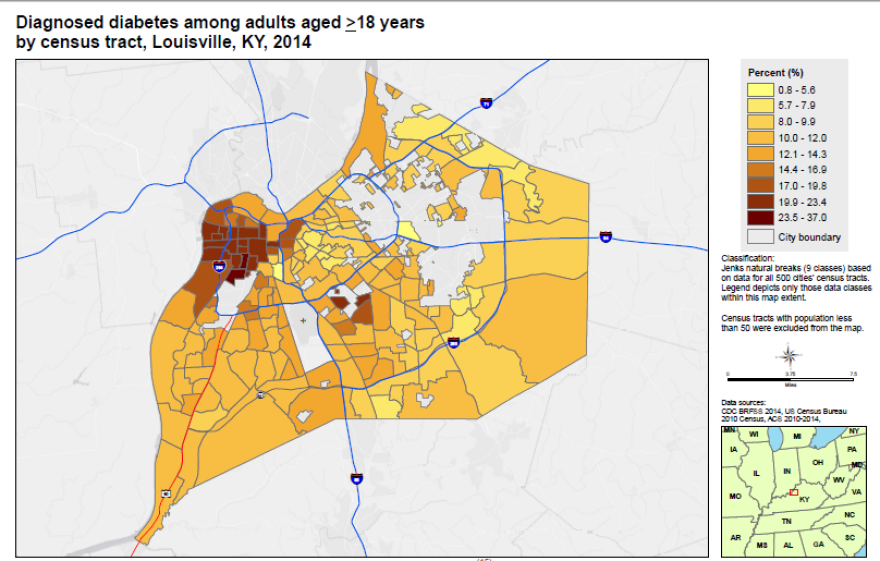The differences between race and income as they relate to health are in high contrast according to new dataout on Louisville.
East Louisville is in better health than West in areas like diabetes, rates of health insurance and physical activity.
The data comes from the 500 Cities Project, a partnership between the Centers for Disease Control and the Robert Wood Johnson Foundation. The project drills down to 500 cities across the country, representing a third of the U.S. population.
“People in the West and Southwest and Central neighborhoods bare a disproportionate share of chronic disease," said Dave Langdon, public information officer with the Louisville Department of Health and Wellness. "You’re more likely to be sick, you’re more likely to die sooner.”
Almost 50 percent of seniors living around Parkland and Portland in West Louisville have lost all their teeth, according to the data. That’s compared to less than 10 percent of seniors in Cherokee Gardens.
The same goes for visits to a dentist. Neighborhoods immediately west of downtown have the lowest rates of visiting a dental clinic, while people in Broad Fields and Wellington have some of the highest rates of dental visits.
“It’s basically a tale of two cities," said Ben Chandler, president of the Foundation for a Healthy Kentucky. "You’ve got the East End Louisville and West End Louisville and the disparities are stark. It has to do with poorer education, difficulties with how kids grow up, safety issues.”
The highest rate of adults who’ve had a stroke, have chronic obstructive pulmonary disease (COPD), kidney disease, diabetes and asthma are in West and South Louisville, the data shows.
Health insurance also comes into play. In the eastern parts of Louisville, up to 10 percent of people are uninsured. That’s compared to West Louisville, where up to 25 percent of people are uninsured, the report says.
“Place makes the biggest difference to health than anything else," said Don Schwarz, vice president of projects at the Robert Wood Johnson Foundation. "We often say that your ZIP code is more important than your genetic code in determining how long you live.”
Throughout the city, there were high rates of high blood pressure, arthritis, high cholesterol and heart disease.
The data comes from smaller surveys that the CDC used to make a model estimates using census tracking.
More information on the project can be found here.










